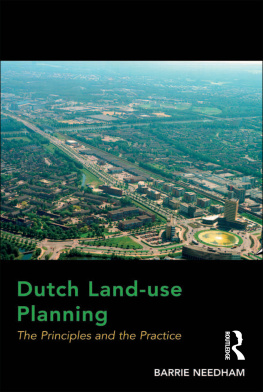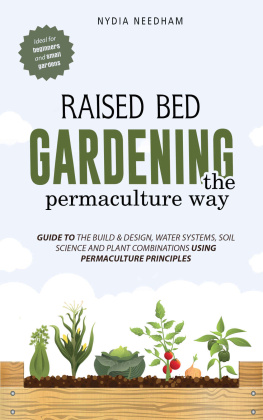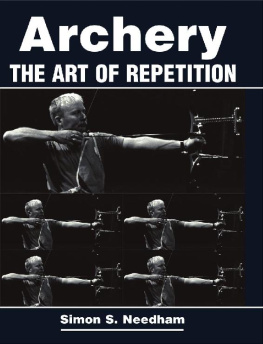DUTCH LAND-USE PLANNING
Dutch Land-use Planning
The Principles and the Practice
BARRIE NEEDHAM
Emeritus Professor Spatial Planning
Radboud University, Nijmegen, The Netherlands
First published 2014 by Ashgate Publishing
Published 2016 by Routledge
2 Park Square, Milton Park, Abingdon, Oxon OX14 4RN
711 Third Avenue, New York, NY 10017, USA
Routledge is an imprint of the Taylor & Francis Group, an informa business
Copyright Barrie Needham 2014
Barrie Needham has asserted his right under the Copyright, Designs and Patents Act, 1988, to be identified as the author of this work.
All rights reserved. No part of this book may be reprinted or reproduced or utilised in any form or by any electronic, mechanical, or other means, now known or hereafter invented, including photocopying and recording, or in any information storage or retrieval system, without permission in writing from the publishers.
Notice:
Product or corporate names may be trademarks or registered trademarks, and are used only for identification and explanation without intent to infringe.
British Library Cataloguing in Publication Data
A catalogue record for this book is available from the British Library
The Library of Congress has cataloged the printed edition as follows:
Needham, Barrie.
Dutch land-use planning : the principles and the practice / by Barrie Needham.
pages cm
Includes bibliographical references and index.
ISBN 978-1-4724-2302-3 (hardback) -- ISBN 978-1-3155-7826-2 (ebook) -- ISBN 978-1-3171-4754-1 (epub) 1. Land use--Netherlands--Planning. 2. City planning--Nether
lands. 3. Regional planning--Netherlands. I. Title.
HD706.N44 2014
333.731309492--dc23
2013032358
ISBN: 978-1-4724-2302-3 (hbk)
ISBN: 978-1-3155-7826-2 (ebk PDF)
ISBN: 978-1-3171-4754-1 (ebk ePUB)
Contents
List of Figures
List of Tables
Preface
There is a lot of interest by professionals, politicians, and the interested layperson, who do not speak Dutch, in the way the Dutch use their land. Those foreigners make study trips to the Netherlands so that they can see and marvel at it. But they do not know how that land-use has come about: how do the Dutch achieve it? Professional planners from abroad have a professional bias for ascribing what they see to the system of land-use planning. But appearances often deceive. This book explains how land-use planning in the Netherlands actually works, and what the relationship is between that planning and what takes place on the ground. In the last few years a growing number of (budding) planners have been coming to this country not only on short study trips, but as students under exchange schemes. They do not speak or read Dutch, and they want to study Dutch planning while they are here. This book should help those foreigners too. There are two other recent books in English about Dutch planning: Wagenaar (2011) and van der Cammen & de Klerk (2012). They are more historical, more about urban design, and less about the daily practice and the mechanisms.
It is not just in English that there is a need for a book which gives a comprehensive description and analysis of Dutch land-use planning. In Dutch too, there is only one other book with a similar aim (Spit & Zoete 2006). This present book takes a different standpoint, written by someone with a background in English planning who has been studying land-use planning in the Netherlands, writing about it, and contributing to the practice too, for more than thirty years. So the two books give to Dutch planners complementary perspectives. This book has been written for Dutch planners, not just for foreigners.
And it has been written with commitment. Dutch planning becomes more fascinating the more you know about it. I am filled with admiration and amazement by its high ambitions and by the conviction of the public, politicians and practitioners that it is worth striving to achieve them. The time and energy put into planning, and the quality of the people doing that, make the Netherlands a planners bazaar: you can find everything there and in abundant quantities. Hence the commitment to and involvement with Dutch planning: I hope that the appreciation comes over in this book. That it is not an uncritical appreciation will become clear on reading.
Barrie Needham
Nijmegen, 2014
Acknowledgements
An earlier version of this book was published in 2007 under the same title by Sdu-uitgevers in The Hague (ISBN 978 90121 20685). When the Southeast University Press, Nanjing City, China approached me in 2012 about publishing a Chinese-language version of that book, I did not want that version to be translated unchanged, because there have been significant changes, to the legislation in particular, since 2007. So I revised it thoroughly before it was translated. This present version is a light revision of that version. I thank Sdu-uitgevers for their co-operation in this, making new copyright agreements possible.
Chapter 1
Setting the Scene: The Underlying Land and the Underlying Attitudes
1.1 Why this Book has been Written
1.1.1 Land Use and Land-use Planning
It is called, prosaically, land use, and we see it all around us. We see that land in one place is used for housing, in another place for shops, in another place for employment. We see streets, pavements, planting, parks, schools. We see land used for agriculture, for horticulture, for woodlands, for nature reserves. And we see how those separate land uses are related to each other. The housing is in big estates of all the same type of house, or there are different types of houses mixed together and interspersed with shops, offices, workplaces. We see that the countryside is open and unbuilt, with all urban land uses concentrated into towns and villages, or we see sprinkled over the countryside houses, firms, fun parks, hamlets new and old.
Some important aspects of land use we do not see, or not easily. We do not easily see whether poorer people are decently housed. Nor how people travel to work, to school, to visit family. Housing segregation people of one social group or income living segregated from people of another group or income is not always visible. If people with certain skills cannot find work except by travelling long distances every day, that also is an important aspect of land use, but not easily seen. Other aspects we hear or smell rather than see: traffic noise, polluted air, silence.
Yet other important aspects of land use can easily be seen, but the significance is not always clear. If, for example, in a country with a high population density like the Netherlands, there is a sharp division between town and country, this signifies that there is an effective policy for restricting building in the countryside. If, such as in the Netherlands, there are few out-of-town shopping centres, then those who know that in similar countries such shopping centres are common, can interpret what they see in the Netherlands as: there is an effective policy against out-of-town shopping centres. The person who sees that Dutch town centres are lively, even in the evenings and on Sundays, will not always know that that signifies a strong policy to support town centres.
If the residents of a country think that the way their land is used is important, they will introduce and support a public policy for influencing that. That is land-use planning. It is often called spatial planning, especially when referring to land-use planning at a more abstract level. This book is about land-use planning in the Netherlands. It aims to describe, analyse, and explain it.













